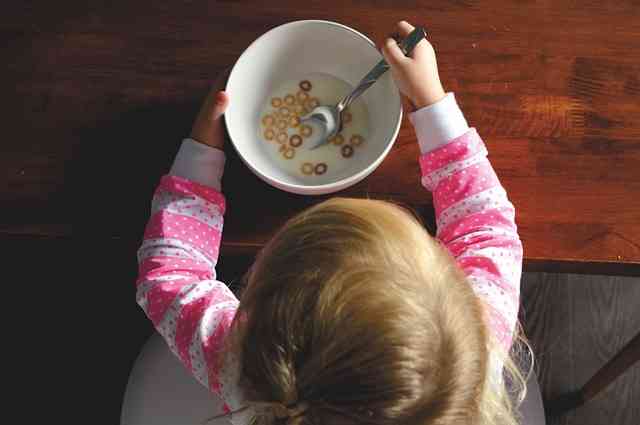I am always surprised at how fast kids grow up. One minute we are bringing them home from the hospital the next we are teaching them how to use a weaning table. While weaning tables are typically used by Montessori parents, it’s a great way to teach your little one how to use utensils from an early age.
But what if they break all the glassware? Isn’t everything made from plastics for a reason? This are valid concerns, and as a first-time parent, you are probably wondering how to navigate these murky waters.
According to Maria Montessori, these questions tend to place more importance on the glass than the physical training of your little one. Broken glass causes a tidy mess, but the skills your baby will learn will be valuable from this point on and for the rest of their lives.
To make this daunting task a little less stressful for you, I have prepared a few tips that will guide you on how to go about introducing a weaning table to your little one and winning at getting them to use the table.
What are weaning tables?
A weaning table is a table and chair that are more comfortable for your little one to use. The size and height come in your baby’s size, which makes it easy for them to sit and reach for their food. It’s tempting to get a fancy little table and chair, but it’s not necessary.
What you need more is to have them sturdy, so your child is safe while eating. The weaning table should also be easy for your little munchkin to access. They should sit and leave the table without assistance.
What about their utensils?
I would encourage you to use a small version of adult dishes. A ceramic bowl or plate, metallic fork and spoon, and a sturdy glass cup and water glass. Because the table is short, the utensils aren’t likely to break every time they are dropped. Besides feeling all grown-up, using glass utensils helps them get used to the real cutlery weight.
How do you use a weaning table?
Let your little one guide you
Using a weaning table will take a little practice depending on how old your little one is. Kids who are still under one year will need a little help while sitting and leaving the table. Always make sure you are around so you can keep an eye on them.
Older kids may not need as much help, but I still recommend you stick around. It’s a learning process for you and your little one. Let them lead you on what they are most comfortable with. Kid’s take some time to learn how to sit through meals.
Don’t be surprised if they keep pushing their table away as they try to make a run for it after eating a few bites. To help them sit still, place their sit up against the wall and block their table with your foot. You might want to try a few more tricks, but this one is usually bound to work.
Allow them to use their silverware
Kids learn by modelling, and since they were born, they have watched you use your spoon and plate. If your little one is interested in using their silverware, allow them. They will fumble with it and spill their food but sit on your hands and refrain from helping them until they ask for help.
Helping your little one may seem like the more natural solution for you, but it won’t allow them to figure out how to use their spoon the right way. If they give up on the silverware, let them use their hands. It takes a little practice to use cutlery, so let them learn at their pace.
Expect to have a wet adventure when your baby needs to use their cup. Besides the spills on the floor, they will pour the content on themselves and manage to get some on you as well. You can use a silicone baby bib to keep most water from getting to your baby.
Most kids can drink from their glass and cup by eight months, but placing the utensil on the table properly usually takes them a little longer. Remain patient and give them time to figure it out. Always encourage your child by clapping for them when they do it right.
What if they break the utensils?
Broken utensils are a natural consequence. Your child has not learned to be careful, and it will take some time for them to master this skill. However, breaking something usually startles them and teaches them to be more cautious.
If they get upset about it, sit with them and let them know it’s alright. Encourage them by telling them they will get it right next time. You can also remind your kid to be careful with their utensils as long as you say it in a respectful and caring way.
Let them help you set their table
The more you involve them with the feeding process, the better they get at it. An excellent tip to help with this is to draw a circle, spoon and fork on a napkin. This will teach your baby where to place what. This is best when your little one is older, but the earlier you start, the better. They learn from an early age what goes where and will catch up quickly when you start involving them in setting the table.
The benefits
Feeling all grown-up
Little girls and little boys like to do things the same way mom and dad do. Meal times are a great way to make them feel part of the household with their little adult cutlery. It also promotes independence. Your baby does not have to wait for you to lift them to a high chair or remain stuck in the chair when they are done.
Versatility
A weaning table is also a great play table for your child. It might end up becoming a busy spot for your little one as they explore the world of coloring, crafts, or just flipping through books. Your child will also be comfortable since their feet are flat on the ground.
Learning table manners
A weaning chair is a more natural way for your child to transition to sitting at the table with the rest of the family. Their weaning table is an excellent spot to learn table manners. It also gives them plenty of room to use their dishes, learn how to set the table, use napkins and mat, and more.
Learning responsibility
Involving your child in setting and clearing the table teaches them to be responsible and to participate in household chores from an early age. As they grow older, you can let them clean their table, something they will easily accept and be proud of. To kids, this are fun activities.
Encourages sibling interaction
A weaning table will provide a gathering space for your kids if you have more than one munchkin. This encourages the siblings to interact during meals, putting everyone right in the heart of the meal. It’s a fun way for them to talk, play, sing rhymes and connect.
An easy way to explore things with their mouth
Babies have a natural tendency to explore new food and flavors. A weaning table offers minimal resistance, which is excellent for the peaky eater. As kids explore new foods with their mouths, they familiarize themselves with flavor and help you avert a power struggle.
It puts the focus on the food
Are you sometimes tempted to stuff your baby’s stomach? I know we were, but not with a weaning tale. This method of feeding emphasizes on introducing new flavors rather than switching from milk to formula or food. This takes away the worry on how much your little one eats because they will still get the necessary nutrients from milk.
The cons
Every coin has two sides, and a weaning table is no different. Here are a few things you need to remember.
• Your little one easily wastes food by spilling
• Be ready to deal with broken glass from time to time before your child learn how to use them properly
• Compared to spoon-feeding, your little one will take longer to finish their food
• Babies don’t have teeth and may be prone to choking. You must also be close by just in case
The controversy
I feel that controversy surrounding baby-led weaning and weaning at an early age is neither here nor there. Every parent has a right to decide which weaning style is best for their child and should not be criticized for it.
If spilled food and an increased grocery and cutlery budget will give you sleepless nights, then, by all means, spoon-feed your baby. If you feel you want your little one to gain the independence of feeding themselves and using cutlery, then set up a weaning table for them.
I don’t believe that parents should be up in arms judging each other’s choices just because they don’t agree. Besides, there is no scientific evidence supporting either of the two, so parents should wean their babies in peace.

